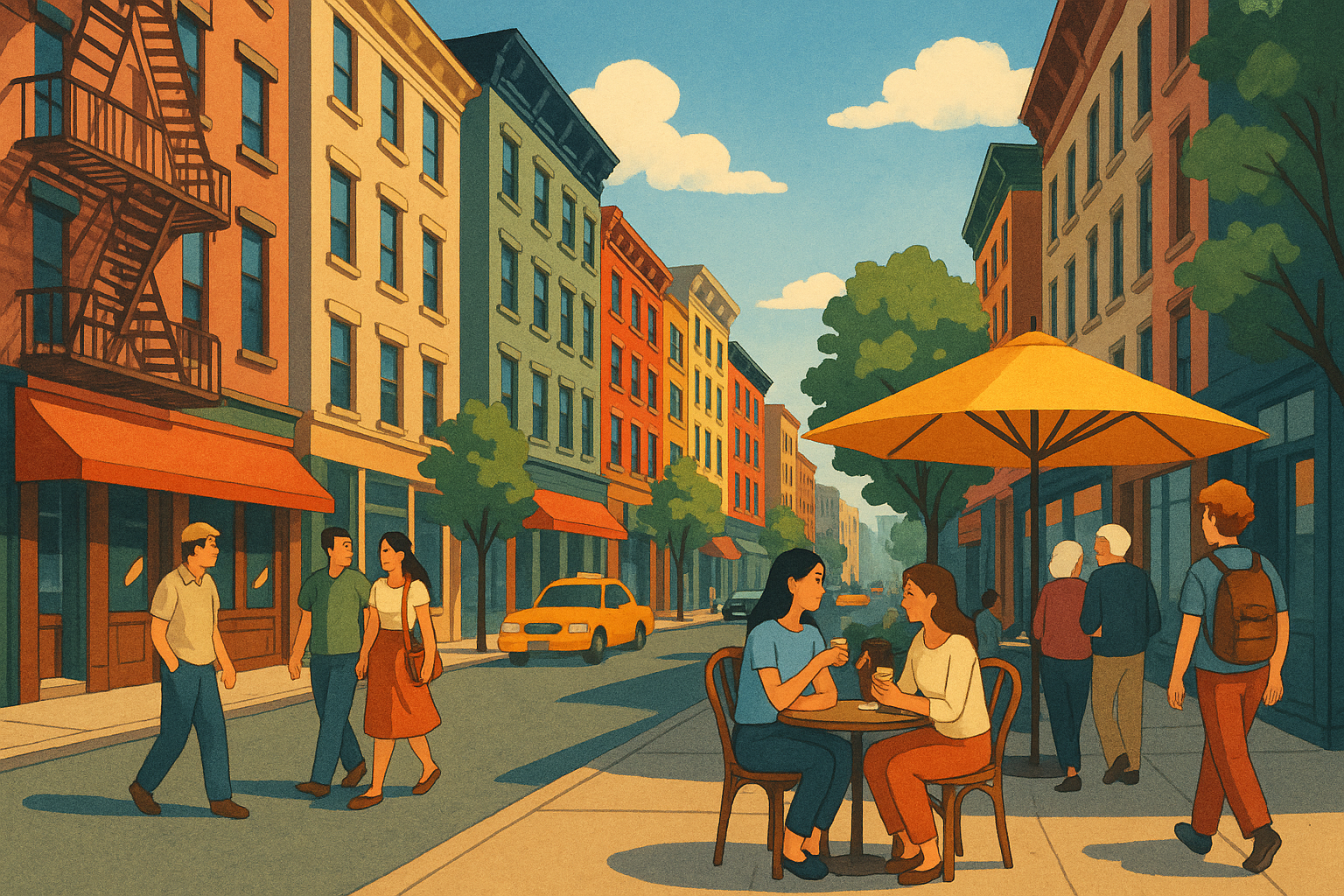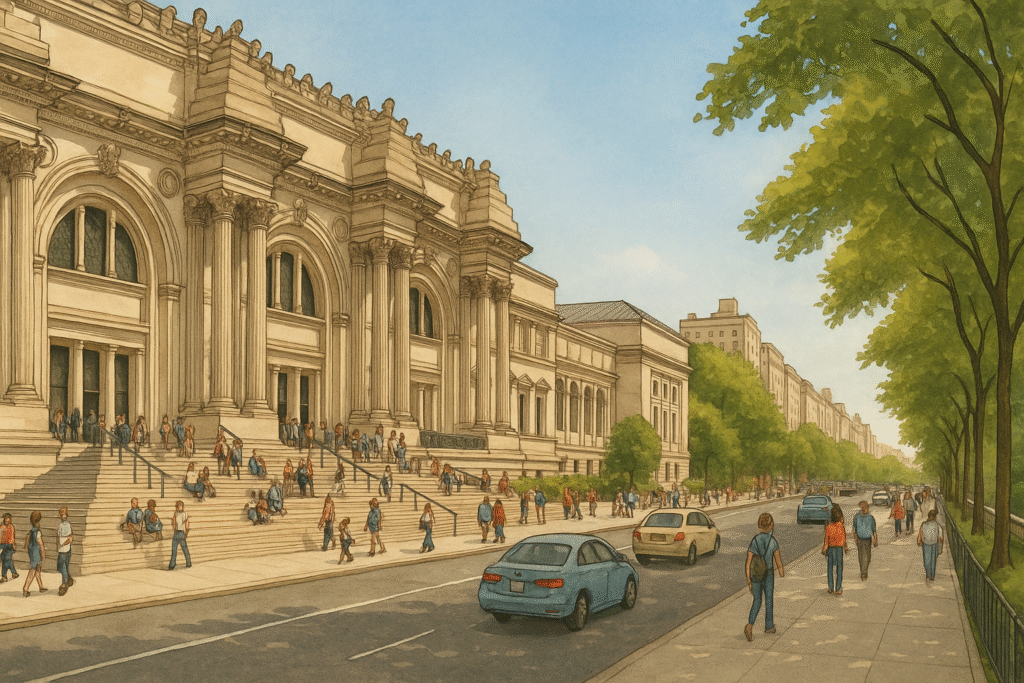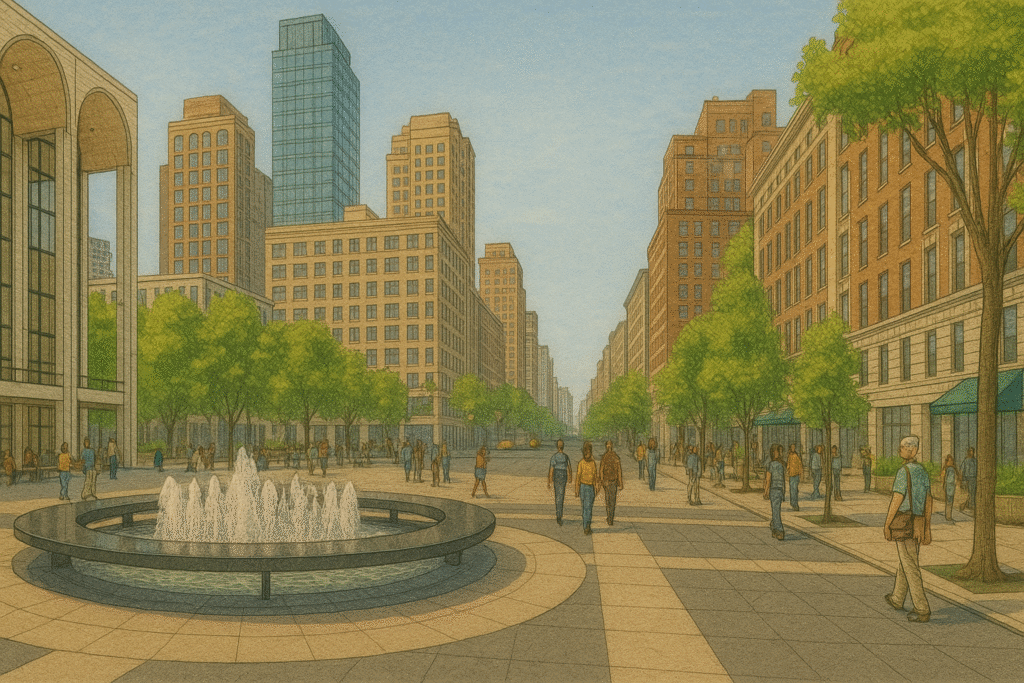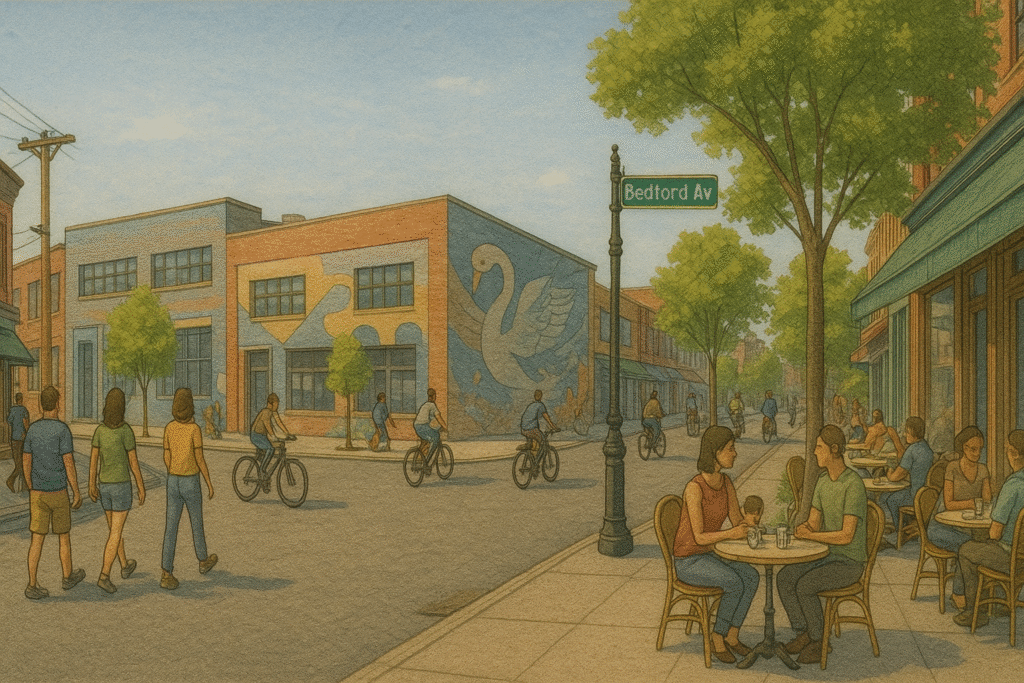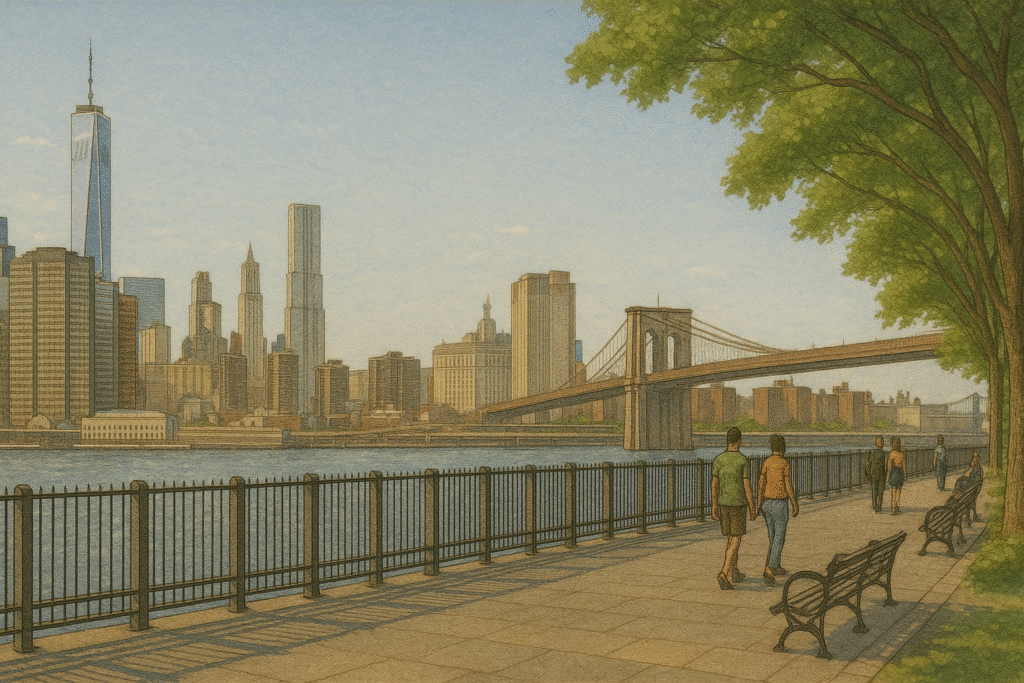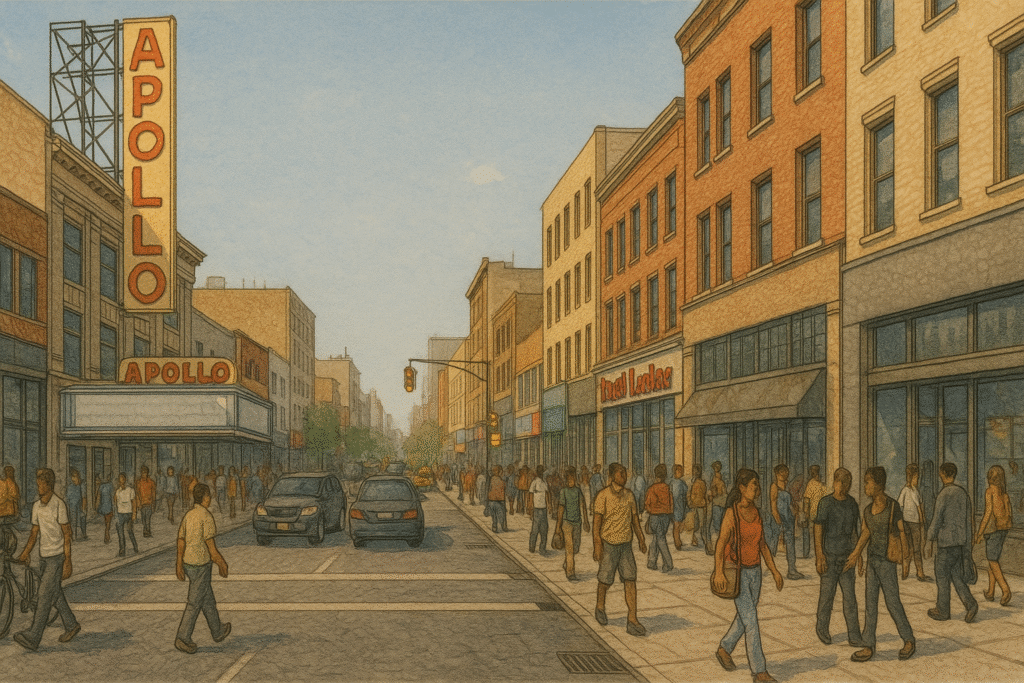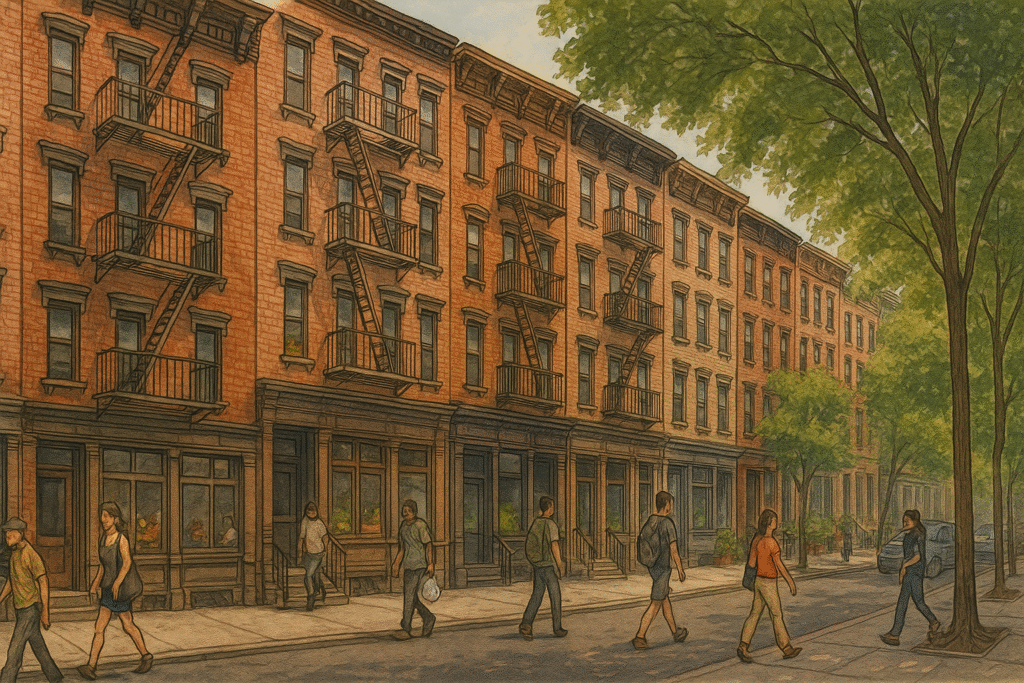This walk explores the overlapping histories and vibrant contrasts of the Lower East Side. Once the entry point for generations of immigrants, the neighborhood remains one of the most compressed cultural landscapes in New York. The route begins at Columbus Park in Chinatown and follows a loosely northbound arc through Doyers Street, Mott Street, Eldridge Street, and Orchard Street. Along the way, visitors will encounter community landmarks, preserved architecture, active places of worship, and commercial storefronts that reflect the area’s evolving identity. The pacing is moderate, allowing time to observe street-level details and move easily between historic points and contemporary institutions. This itinerary is best suited to curious walkers prepared for sharp cultural transitions within a small geographic footprint.
Start at Columbus Park and Doyers Street
The walk begins at Columbus Park, located in the heart of Chinatown near Mulberry and Bayard Streets. Once part of the 19th-century slum known as Mulberry Bend, the park is now a busy public space. In the morning, older residents gather here to practice tai chi, play card games, and sit in small groups under the trees. Seating areas are spread throughout the park, and visitors can observe daily routines that reflect the surrounding community.
At the park’s southern edge stands the Kimlau War Memorial, a stone arch honoring Chinese Americans who served in the U.S. military during World War II. The structure faces the street and includes both English and Chinese inscriptions. Its placement marks a point of transition between the park and the broader civic area that includes courthouses and government buildings.
A short walk east leads to Lin Sister Herb Shop on Grand Street. Inside, shelves are filled with glass jars, metal tins, and labeled drawers containing dried roots, mushrooms, and medicinal powders. The interior has a distinct herbal scent, and customers speak in a mix of Cantonese, Mandarin, and English. This is an active business that serves local residents.
Just around the corner, Doyers Street makes a sharp bend between Pell and Bowery. The curve is unusual and creates a short, enclosed stretch that once played a role in local gang violence during the early 1900s. Known historically as “The Bloody Angle,” the street is now home to small restaurants and long-running businesses, including the Nom Wah Tea Parlor, which has served dim sum on this block for over a century. The combination of narrow architecture, tiled signage, and foot traffic makes this one of the most visually distinct streets in the neighborhood.
Mott Street to Eldridge Street
From Doyers Street, continue south to Mott Street, one of the central corridors of Chinatown. The sidewalks are busy with foot traffic, and storefronts alternate between restaurants, herbal shops, grocers, and bakeries. Produce stands spill onto the sidewalk with boxes of ginger, bitter melon, lychee, and bundles of leafy greens. Hand-painted signs and bilingual menus reflect long-standing businesses that serve the local Chinese-speaking population.
Continue walking south to Canal Street, a wide, crowded thoroughfare lined with vendors selling imitation designer goods, electronics, and accessories. The volume of traffic increases at this corner, and pedestrians navigate between storefronts and sidewalk displays. The signage is dense, and storefronts often appear behind rows of merchandise.
Just west of Mott Street, the Museum of Chinese in America (MOCA) sits on Centre Street in a contemporary building with clean lines and large windows. Inside, the permanent collection focuses on Chinese immigration, labor, and community formation in the United States. The exhibits include photographs, artifacts, and personal narratives that document individual and family histories. Visitors can follow timelines that connect national policy changes to local experiences. The museum offers a quieter, climate-controlled contrast to the surrounding streets.
Heading north from Canal, walk several blocks to Eldridge Street, a residential street with narrower sidewalks and low-rise buildings. At number 12 stands the Museum at Eldridge Street, located inside a restored synagogue built in 1887. The exterior is brick with Moorish details, while the interior features vaulted ceilings, stained glass, and preserved architectural elements. The museum offers self-guided and docent-led tours focused on Jewish immigrant life on the Lower East Side. This section of the walk shifts attention from Chinatown’s active streets to the legacy of earlier immigrant groups who lived and worshipped in the same neighborhood.
Orchard Street to the Bowery
From Eldridge Street, continue north to Orchard Street, a narrow corridor once filled with pushcarts and small vendors. The sidewalks remain active, though most stalls have been replaced by storefronts selling luggage, textiles, and imported goods. The facades feature brick tenements with metal fire escapes, and signage varies from aging painted letters to modern vinyl displays.
Halfway up the block stands the entrance to the Tenement Museum, located inside a preserved 19th-century apartment building. The museum offers guided tours focused on the lives of working-class immigrants who lived in this structure and others nearby. Visitors explore recreated apartments and hear stories based on documented family histories. The building itself retains original wood floors, steep staircases, and narrow hallways, reinforcing the physical conditions of the era.
North of the museum, continue along Orchard Street past fabric stores like Zarin Fabrics and luggage outlets that reflect the area’s commercial identity. Most shops here specialize in a single product type and have operated for decades. The Lower East Side Visitor Center sits nearby and offers maps, guides, and background on current attractions.
End the walk several blocks west at the New Museum on Bowery. The building is a modern stack of white boxes with minimal windows and a ground-floor café and bookstore. Inside, rotating exhibitions feature contemporary art across a range of media. Visitors can take an elevator to the rooftop observation deck, which offers a view back over the neighborhood just explored. From this vantage point, the contrast between historic walk-ups and new construction becomes clearly visible.
Orchard Street to the Bowery
From Eldridge Street, continue north to Orchard Street, a narrow corridor once filled with pushcarts and small vendors. The sidewalks remain active, though most stalls have been replaced by storefronts selling luggage, textiles, and imported goods. The facades feature brick tenements with metal fire escapes, and signage varies from aging painted letters to modern vinyl displays.
Halfway up the block stands the entrance to the Tenement Museum, located inside a preserved 19th-century apartment building. The museum offers guided tours focused on the lives of working-class immigrants who lived in this structure and others nearby. Visitors explore recreated apartments and hear stories based on documented family histories. The building itself retains original wood floors, steep staircases, and narrow hallways, reinforcing the physical conditions of the era.
North of the museum, continue along Orchard Street past fabric stores like Zarin Fabrics and luggage outlets that reflect the area’s commercial identity. Most shops here specialize in a single product type and have operated for decades. The Lower East Side Visitor Center sits nearby and offers maps, guides, and background on current attractions.
End the walk several blocks west at the New Museum on Bowery. The building is a modern stack of white boxes with minimal windows and a ground-floor café and bookstore. Inside, rotating exhibitions feature contemporary art across a range of media. Visitors can take an elevator to the rooftop observation deck, which offers a view back over the neighborhood just explored. From this vantage point, the contrast between historic walk-ups and new construction becomes clearly visible.
This route through the Lower East Side brings together multiple layers of New York City history within a compact walk. Visitors move from active park spaces to preserved tenements, from family-run herb shops to rotating art exhibitions. Each stop reveals a different aspect of the neighborhood’s past and present, shaped by immigration, commerce, and local institutions. The walk does not follow a single theme but instead reflects the complexity of a district still shaped by movement, memory, and adaptation. For travelers interested in street-level detail and cultural continuity, this itinerary offers a close look at how neighborhoods evolve while remaining rooted in place.

The Street Sign
The Street Sign points the way to where things are — the parks, restaurants, museums, and everything else. These guides are built to save you time and energy. Need a plan for an NYC outing? Follow The Street Sign.
